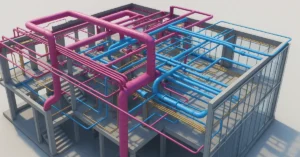Discover brutalist buildings in kraków
Kraków, a city celebrated for its medieval charm and Renaissance splendor, also hosts a lesser-known but equally compelling chapter of architectural history. Brutalist buildings in kraków boldly contrast the city’s historic streets, offering visitors and locals alike a chance to witness concrete masterpieces born from post-war innovation. From avant-garde art galleries to imposing hotels, these structures reflect the ambitions and ideologies of their time, challenging traditional notions of beauty and function.
What is Brutalist Architecture?
Brutalist architecture emerged in the mid-20th century as a response to the ornate styles of previous eras. Characterized by exposed concrete surfaces, bold geometric forms, and a focus on utilitarian design, Brutalism (from the French “béton brut,” meaning “raw concrete”) sought to celebrate structural honesty over decorative elements. In Eastern Europe, including Poland, Brutalism became intertwined with socialist ideals: uniform housing blocks and public buildings symbolized progress and collective strength.
Kraków’s Must-See Brutalist Buildings
1. Bunkier Sztuki (BWA Pavilion)
Originally constructed in 1965 as the BWA Pavilion, this gallery was designed by Krystyna Różyska-Tołłoczko. Its rough gray façade, irregular forms sculpted into the concrete, and elevated entrance footbridge create a striking dialogue with the surrounding Planty gardens. Today, the Bunkier Sztuki remains a hub for contemporary art, its Brutalist shell housing exhibitions that challenge artistic conventions.
2. Hotel Forum
Designed by Janusz Ingarden and completed between 1973 and 1989, Hotel Forum towers along the Vistula River. Its suspended balconies, cantilevered over two massive concrete pillars, frame panoramic views of Kraków’s skyline. Once a glamorous testament to late communist modernity, the hotel fell into decline before recent efforts began its revitalization. Its weathered concrete surfaces and bold structural lines capture the era’s optimism and technical ambition.
3. Cracovia Hotel
Opening in 1965, the Cracovia Hotel was among Kraków’s first major modernist projects. Architect Witold Cęckiewicz employed light reinforced concrete for the structure’s core, paired with a glazed ground floor and an abstract mosaic in the lobby. This combination of raw materiality and artistic detail transformed the Cracovia into a social and architectural landmark, bridging functional hospitality with avant-garde aesthetics.
4. Kijów Cinema
Also completed in 1965 and designed by Witold Cęckiewicz, the Kijów Cinema features a futuristic curved roof and an expressive, sculptural form. Its bold canopy and large abstract mosaic exterior invite cinema-goers into a space where modern art and film merge. This cinema exemplifies how Brutalism extended beyond housing and government buildings into cultural venues, enriching Kraków’s urban fabric.
5. Nowa Huta District
Conceived in the early 1950s as a model socialist city, Nowa Huta boasts one of Europe’s largest ensembles of Brutalist and socialist-realist structures. Wide boulevards, massive apartment blocks, and monumental public spaces illustrate the district’s utopian ethos. Walking through Nowa Huta feels like stepping into a living museum of concrete architecture, where each edifice speaks to a vision of collective progress.
Preserving Kraków’s Brutalist Legacy
Preservation Efforts and Adaptive Reuse
Once derided for their austere appearance, Kraków’s Brutalist landmarks are now gaining appreciation among architects, historians, and preservationists. Efforts to restore the Bunkier Sztuki façade, revitalize Hotel Forum, and repurpose older cinemas underscore a growing recognition of Brutalism’s cultural value. Adaptive reuse projects ensure these concrete giants continue to serve the community, bridging past aspirations with contemporary needs.
Why You Should Explore brutalist buildings in kraków
Engaging with these robust concrete structures offers a fresh perspective on Kraków’s history and urban evolution. Beyond aesthetic appreciation, visiting Brutalist sites reveals stories of technological innovation, political ideology, and artistic experimentation. A self-guided tour of Bunkier Sztuki, Cracovia Hotel, and the sweeping avenues of Nowa Huta encourages deeper understanding of how architecture shapes—and is shaped by—society.
Conclusion
Brutalist buildings in kraków stand as enduring symbols of mid-century ambition and architectural daring. Although opinions on their beauty vary, their monumental forms and raw textures demand attention. Exploring these concrete marvels unveils a hidden layer of Kraków’s identity, reminding us that the city’s architectural heritage encompasses far more than its medieval roots.
If you’re interested in learning more about architecture firms in Europe, check out this comprehensive list of the top 50 firms compiled by Archgyan. From innovative startups to long-established industry leaders, this list has it all. Take a look and discover some of the most inspiring and influential architecture firms in Europe today.
If you’re interested in architecture and want to learn more about this amazing field, subscribe to our podcast on youtube
For more SketchUp tutorials, head to https://www.sketchupguru.com










